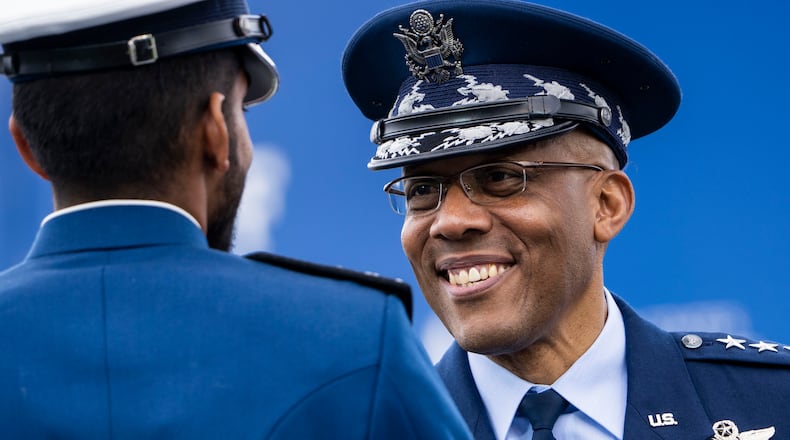Air Force Chief of Staff Gen. Charles Q. Brown Jr., who has been nominated to become the next chairman of the Joint Chiefs of Staff, has a mantra that the Air Force must “accelerate change or lose.”
Technology evolves at break-neck speeds and some officials say the Air Force is moving too slow when it comes to developing and deploying new weapon systems.
But the Digital Transformation Office, which was created two years ago at Wright-Patterson Air Force Base by the Air Force Material Command, is trying to find ways to ensure that the U.S. leaves its foes in the dust in the technology and security advancement race.
The office is focused on digital innovation and modernization across the Air and Space force.
“We’ve got to go faster so we’re not outpaced in a future fight,” said Kyle Hurst, chief, of the Department of the Air Force Digital Transformation Office at Wright-Patt.
Gen. Brown at a conference last fall talked about how between 1944 and 1984 on average a new fighter plane was produced every two and a half years and a new mobility platform every year and a half.
But he said there have only been three fighters and two mobility aircraft produced in the last 25 years.
Brown said the Air Force needs to collaborate and integrate like never before, because the threats of today require a collective effort.
Technology can revolutionize warfare and digital tools can help speed up processes that have led to long waits to get weapons systems developed, tested and into the field.
Improving access to digital tools is one of half a dozen initiatives within digital material management, Hurst said, adding that one example of this is shifting away from traditional paperwork to modern software tools and model-based system engineering tools.
Hurst said other focus areas include training the workforce to use new digital tools; instilling a digital-first culture; modernizing information technology infrastructure; structuring and securing data and developing digital strategies.
Digital tools and engineering helped the Air Force “re-wing” the A-10 Thunderbolt II, which means the fighters are expected to keep flying until the late 2030s, according to the Air Force Times.
2D drawings of the aircraft that the Air Force received were turned into 3D models, which helped devise ways to extend the lives of the fighters, Hurst said.
Once the wings are replaced, the A-10 can get an additional 2,500 flight hours before the next replacement is needed, according to the Air Combat Command.
Digital engineering helped the T-7A Red Hawk advanced trainer go from the drawing board to a first flight in 36 months.
The training jet was fully designed using 3D model-based definition and data management systems developed at Boeing during the last two decades, the aerospace company said.
“The build process leverages full size determinant assembly, which allows technicians to build the aircraft with minimal tooling and drilling during the assembly process,” Chuck Dabundo, Boeing vice president, T-7 programs, said in a statement. “The digital process accounts for a 75% increase in first-time quality.”
Gen. Brown has said the Air Force needs change and a new culture to confront emerging threats from “near peer” competitors like China.
“We have the opportunity, but not the time, Brown said at the 2021 Air Force Association’s air, space, and cyber conference. “We must accelerate change to leave our mark and make the impossible possible.”
About the Author


